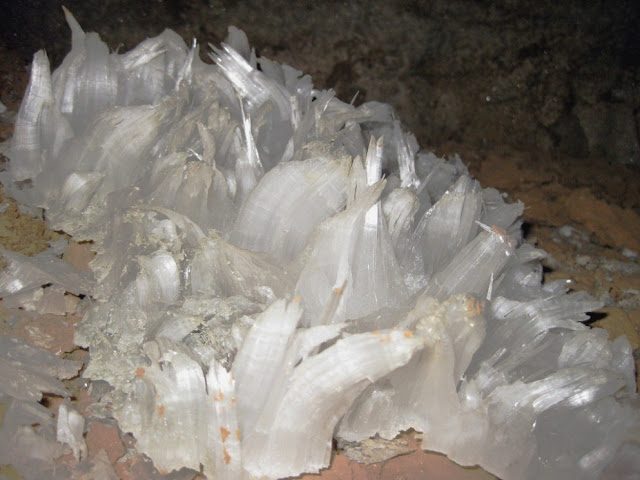Gypsum Rock Revealed as New Water Source for Life
 |
| Gypsum Crystal. Photo: Chuck Sutherland |
The crystallization water of gypsum rocks is a relevant water source for plants
A team of scientists led by plant physiologists Sara Palacio from the Instituto Pirenaico de Ecología and Juan Pedro Ferrio of the University of Lleida in Spain looked into how the desert shrub, Helianthemum squamatum, gets the water it needs to survive. Nicknamed the rock rose, this plant boasts clusters of bright, canary yellow flowers, and thrives in semi-arid Mediterranean environments.
Palacio and Ferrio analysed the plant’s sap to determine that it was getting its water from two main sources – the nearby soil, and gypsum rocks. Gypsum is a very soft mineral found in arid and semi-arid environments across Africa, Asia, and even on Mars, and contains water in the form of crystallisation water, which is water that occurs inside crystals.
According to Neomatica, up to 20.8 percent of gypsum’s weight is water, but this changes depending on how dry the environment is throughout the year. “The high percentage by weight, combined with the observation that plants often grow on top of the mineral, has hinted at its role in sustaining life.”
Because soil and gypsum water are composed of different amounts of hydrogen and oxygen isotopes, the research team examined the isotopic composition of the sap water excreted by H. squamatum to confirm if it was using crystallisation water from the gypsum in order to survive.
“The researchers found that in both spring and summer, the sap water was closer to water from gypsum in terms of its isotope composition. However the similarity became more pronounced during the summer, with calculations showing that 70 percent to 90 percent of the sap water was from gypsum,” reports Neomatica. “In the spring, the balance was more even between the two sources.”
Publishing their findings in Nature Communications, Palacio and Ferrio also investigated if the gypsum water was actually just sourced from the soil after undergoing some kind of isotopic changes that made it look isotopically like gypsum water, but found no evidence for this.
“The use of such crystallisation water by organisms would point to a completely new water source for life, critical under dry conditions,” they concluded. “Given the widespread occurrence of gypsum in dry lands throughout the Earth and in Mars, these results may have important implications for arid land reclamation and exobiology.”
The study was published in Nature Communications